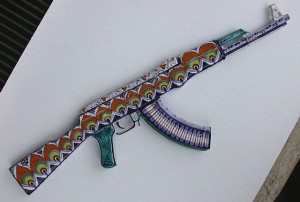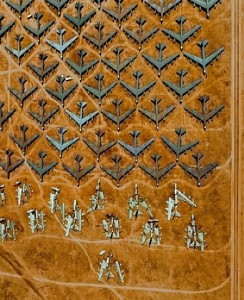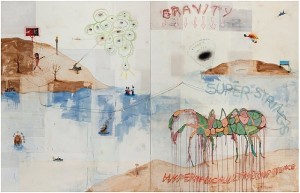 Cramer, Christopher. 2007. Violence in Developing Countries: War, Memory, Progress. Indiana University Press.
Cramer, Christopher. 2007. Violence in Developing Countries: War, Memory, Progress. Indiana University Press.
Cramer’s book is a strident polemic and methodical critique against widely accepted explanations for contemporary violence. His critique is mainly geared at liberal interpretations of war in which violent conflict is seen as an aberration from the standard operating procedures of modernity. In this view, liberals see violence as an anomaly or outlier both in terms of time (anachronistic) and space (exotic, barbarian). Cramer also disputes the neo-classical economistic explanations of wars as the cumulative result of rational, calculative individual actors trying to maximize utility. He says these two interpretations are conjoined through the popular notion of war and violence as “development in reverse”—a phrase coined by the World Bank.
Cramer holds the opposite view. He argues that contemporary wars and violence—though horrible and tragic—are processes with elements of creative destruction that, on balance, are not always, necessarily reactionary. “Violent conflict, however destructive, may contain dynamics that have the potential to help bring about progressive change” (10). And he concludes that wars “provoke social, institutional and sometimes technical adjustments, some of which have the potential to contribute to longer-term accumulation” (282).
Tacking between global claims or theories about violence and empirical cases of conflict, Cramer spends most of the book disputing existing macro-explanations of violence in the Third World—whether the cultural determinism of the “clash of civilizations” and inter-ethnic strife, or “a-political” scrambles for scarce resources and personal enrichment. While not denying elements of all these, he offers his own macro-explanation for violence in Chapter Six. Cramer claims that contemporary wars and violence—or what he prefers to conceptualize as a continuum of violence—are symptomatic of ongoing transitions to capitalism and that they are, in fact, the birth pangs of capitalism’s expansion and reproduction—i.e. primitive accumulation. “Development” itself names this transitional and violent interregnum in which the very terms of accumulation and a region’s articulation with the world-economy are being contested and decided.
 Cramer’s view about violence as a historical force seems to stem from two underlying assumptions—one, implicit and the other explicit. Implicit is what seems a rather teleological interpretation of Marxism, in which capitalism is a progressive force leading to (eventually) to more just social relations. Second and explicit is what Cramer calls a “melancholy perspective,” which he defines as “one that accepts violence in the ‘human condition’, the likely links between violence and progress, and the possibilities of progress, while accepting too that any and all progress simply raises new conflicts and problems, that no amount of progress will erase conflict and violence” (47). The idea of “progress” is described at one point by Cramer as “awkward” but goes undefined; nor is “development”—or “developmental” (cf. 280)—clearly identified though he sometimes equates it with expanded accumulation.
Cramer’s view about violence as a historical force seems to stem from two underlying assumptions—one, implicit and the other explicit. Implicit is what seems a rather teleological interpretation of Marxism, in which capitalism is a progressive force leading to (eventually) to more just social relations. Second and explicit is what Cramer calls a “melancholy perspective,” which he defines as “one that accepts violence in the ‘human condition’, the likely links between violence and progress, and the possibilities of progress, while accepting too that any and all progress simply raises new conflicts and problems, that no amount of progress will erase conflict and violence” (47). The idea of “progress” is described at one point by Cramer as “awkward” but goes undefined; nor is “development”—or “developmental” (cf. 280)—clearly identified though he sometimes equates it with expanded accumulation.
Quick and Dirty Chapter Summary
Ch. 1 The Angola Gun: Lays the conceptual groundwork and further elaborates some of the arguments first put forth in the introduction with deeper historical reference, particularly on the question of the supposed novelty of contemporary violence and, relatedly, liberal denial and amnesia of its own constitutive violence.
Ch. 2 Categories, Trends and Evidence of Violent Conflict: Argues against rigid typologies and framings of violent conflict and suggests that a broad continuum of forms of conflict makes better analytical and political sense. He shows how such classification schemes and statistical “evidence” play into problematic and misleading liberal ideologies of conflict.
 Ch. 3 Deviant Conditions: Sweeping review of prominent explanations of global violence, and its relationship to development (or supposed lack thereof), taking particular aim at economic inequality as the root of conflict and explanations inspired by neo-classical economic thought. In some cases overlapping with the latter, Cramer also critically analyzes the following meta-explanations for violence: Culture clash (ethnic, religious, and/or “civilization”); resource scarcity; resource abundance (resource curse); and the greed/grievance binary.
Ch. 3 Deviant Conditions: Sweeping review of prominent explanations of global violence, and its relationship to development (or supposed lack thereof), taking particular aim at economic inequality as the root of conflict and explanations inspired by neo-classical economic thought. In some cases overlapping with the latter, Cramer also critically analyzes the following meta-explanations for violence: Culture clash (ethnic, religious, and/or “civilization”); resource scarcity; resource abundance (resource curse); and the greed/grievance binary.
Ch. 4 Angola and the Theory of War: Angola has often been used as an archetypical case to illustrate one or another of the meta-explanations above, so he uses Angola to illustrate the broad critique leveled in the previous chapter. While acknowledging valid kernels in all the explanations, he discredits claims of a singularly deterministic explanation.
Ch. 5 How to Pay for War: By examining how wars are financed in historical and comparative perspective, Cramer tries to tease apart what—if anything—is particularly novel about today’s violence. This chapter is partly an analytic stepping-stone to the next chapter because it begins advancing the idea that war finance has (and could) serve to advance institutional, organizational, political, and economic development and a particular region or country’s integration into the world economy.
Ch. 6 Passionate Interests: Cramer proposes his own macro-explanation for violence in developing countries. The main axis of this argument is that countries are undergoing transitions to capitalism, which implies convulsive changes in social, economic, political, and institutional organization—an inherently violent process, as various individuals and social groups jockey for position. The cornerstone of his contention is the notion of primitive accumulation (discussed above on page 1). He adds the related point that developing countries are doubly burdened by simultaneous efforts of state formation.
Ch. 7 The Great Post-Conflict Makeover Fantasy: Cramer aims to show that “post-conflict” itself is a fallacy based on the idea of a “blank slate” and on the papering-over of unresolved political struggles. The underlying assumption of post-conflict remains an a-historical and ardently liberal one, in which post-conflict societies finally accept the measures of liberal statehood, or at least the trappings of such—i.e. free markets, nominally free/fair elections, etc.
